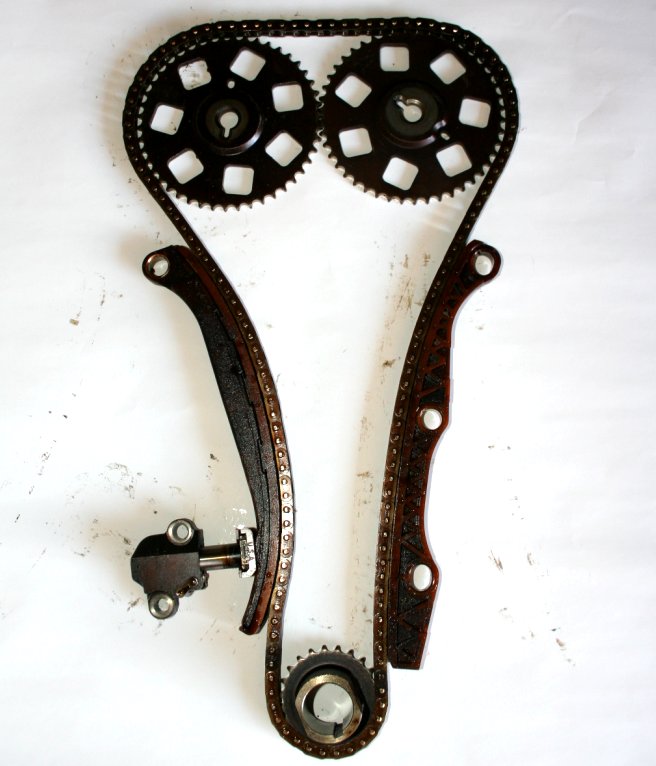Timing Chain Set

Superior to timing belts, timing chains usually only need to be changed out when the engine is rebuilt. These timing chain components showed some wear, but were still serviceable even after more than 200,000 miles. The two large gears operate the overhead valve trains, the small gear gets power from the crankshaft to operate the timing chain. The two arched components are timing chain guide rails that keep the timing chain tight; the right rail is stationary and the left rail is adjustable. The small component in the lower left is the chain tensioner. It’s spring loaded with a ratchet mechanism that receives hydraulic pressure from the oil pump. Its job is to keep pressure on the adjustable rail and tighten it up as the chain wears and gets a little slack. If a timing chain is excessively worn or the chain tensioner has failed, you might hear a bit of rattling coming from where the timing chain is located, especially when gunning the engine slightly when it’s cold. Generally, timing chains are located on the same face of the engine where one finds fan belts or the serpentine belt.